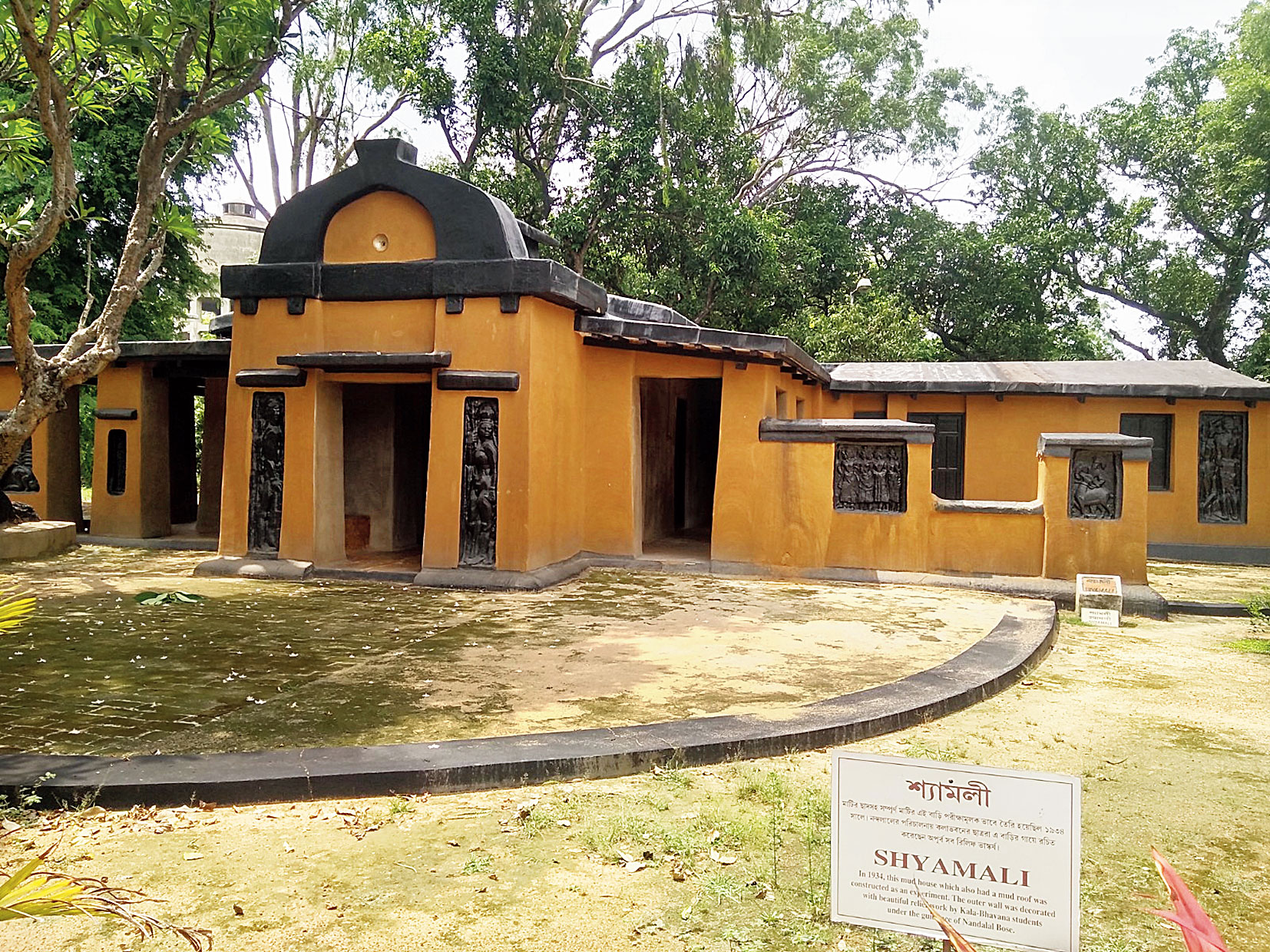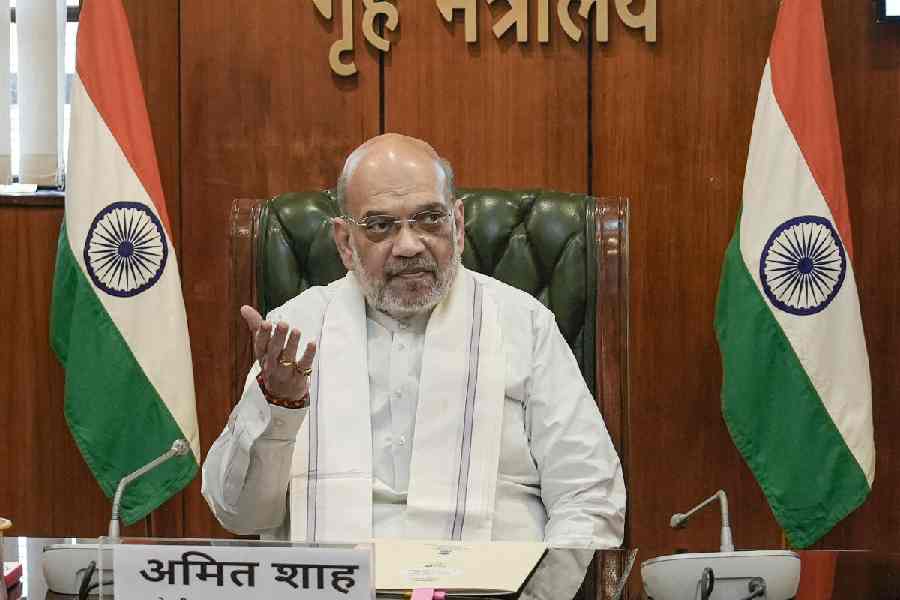Vice-President Venkaiah Naidu will inaugurate the renovated Shyamali, Rabindranath Tagore’s mud house, on August 16.
The renovation of Shyamali, which was built in 1935 and is one of Tagore’s five houses in the Uttarayan complex at Visva-Bharati, took five years because of delays.
The mud house, where Mahatma Gandhi had stayed during a visit to Visva-Bharati, was found damaged in 2012, with the Visva-Bharati authorities reporting water seepage and corrosion. In 2013, the university requested the Archaeological Survey of India (ASI) to renovate the house and allocated Rs 50 lakh the next year for the job.
The ASI began the renovation in 2015.
“Our Vice-President will inaugurate Shyamali as the renovation work has been completed. After inauguration, the house will be open to visitors,” said Bidyut Chakrabarty, the vice-chancellor of Visva-Bharati.
Sources said Naidu would come in a chopper on August 16 morning and inaugurate Shyamali, after which he would deliver a lecture at the Lipika auditorium.
Senior ASI officials said it was a challenge to renovate the mud house, particularly the roof, keeping its heritage value intact.
According to the officials, the ASI has experts to handle concrete monuments but did not have the wherewithal to renovate a mud house, especially one with a mud roof.
Sources in the ASI said several rounds of planning had been done, but work had to be stopped because of the difficulty in finding an engineer with expertise in mud constructions.
“The damaged mud roof was the main problem. We had to change the plan at least half a dozen time because of the typical construction of the house,” a senior ASI official said.
In the final stages of the renovation, the ASI had to procure organic materials that had been used for centuries to build strong mud houses, but were abandoned around 100 years ago. They hired experts from Bankura, Purulia and Jharkhand to renovate the house with organic materials, including 350 pieces of wood apple, 15kg of fenugreek seeds, 40kg of urad dal, 60kg of jaggery and 20kg of myrobalan.
Sekhar Kumar Dutta, deputy superintending archaeological engineer who is now posted in Assam’s Guwahati, was roped in by the ASI to repair the house.
Visva-Bharati officials said Dutta had earlier played a key role in renovating 27 houses and structures at the university, including Chaity, a mud structure on the Patha Bhavana premises.
“It was our challenge to repair Shyamali by retaining its original look. Nowadays we use chemicals for renovation of monuments. But here we used technology that was in vogue 100 years ago,” Dutta told The Telegraph from Guwahati.
“It is really a good news that our Vice-President will inaugurate it and finally the house will be open to visitors,” Dutta added.
Officials at Visva-Bharati said Shyamali would need to be repaired every two years as the roof could get damaged during monsoon.
ASI officials, however, said the organic materials used to repair the roof would be able to withstand rain and the sun for at least five years.
“But the house will need regular maintenance,” an official said.











